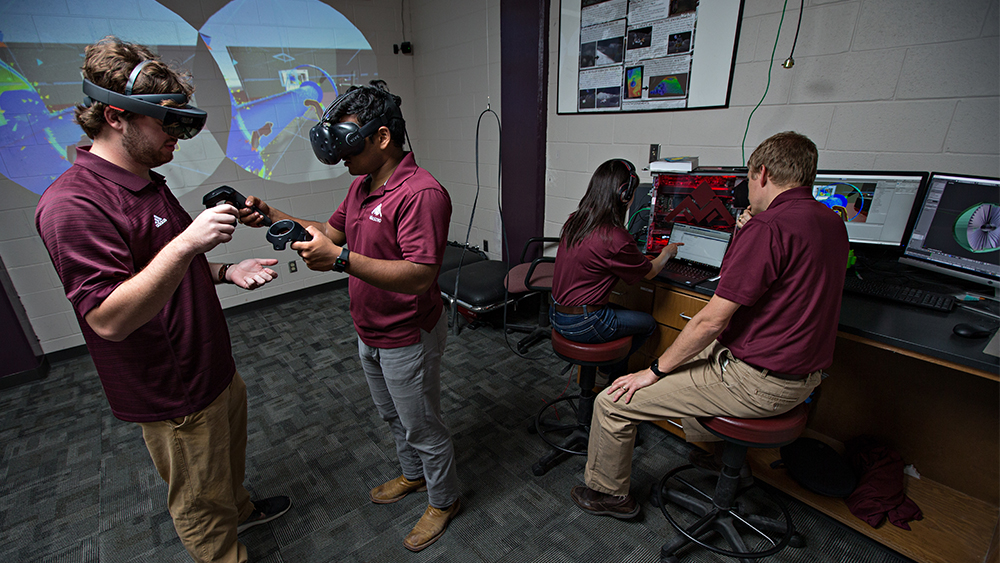
One of the difficulties encountered when teaching science, technology, engineering and mathematics (STEM) courses is trying to present three-dimensional concepts using two-dimensional classroom tools. The Maestro VR Studio in the Department of Aerospace Engineering has been funded by the Texas A&M Triads for Transformation initiative to conduct research into how the STEM classroom experience can be enhanced through the use of virtual reality (VR).
The goal of the research is to bridge the gap between 3D STEM concepts and traditional 2D teaching methods by developing a more intuitive teaching experience that empowers a variety of learning styles. A fund of $30,000 over the next year will be committed toward the development of the required software tools necessary for the project.
The research will be conducted by a Triad team consisting of Dr. Darren Hartl from the Department of Aerospace Engineering, Dr. Raymundo Arroyave from the Department of Materials Science and Engineering, and Dr. Christopher Nowotarski from the Department of Atmospheric Science. The majority of the technical work will be performed by aerospace graduate student Michayal Mathew.
In presenting 3D concepts using 2D tools, students have traditionally been forced to rely on their own ability to visualize higher dimensional concepts. As Hartl puts it, “Three-dimensional VR visualization is now a commercially available and even affordable capability; it’s time to give our students better tools to immerse themselves in concepts of ever-increasing complexity.” The proposed experience revolves around educators communicating and interacting with students in the classroom using VR technology that will be live-streamed for student viewing using the developed applications, students’ own smartphones and a low-cost VR headset.
The researchers will leverage the HTC Vive VR system for content creation and instructor delivery and Google Cardboard headsets for student consumption. The system will empower a lecturer to take advantage of the 3D properties of STEM-applied concepts while using the Vive and allow for these lessons to be streamed to the low-cost Google Cardboards in real-time.
The primary short-term goal is the ability to present results generated by existing STEM software tools in the classroom using VR technology. Educators would use the technology to lead lessons involving such concepts as solid mechanics, material crystallography and meteorological storm structures, elucidating their inherent 3D aspects, while students use the Google Cardboards to view the interactive lessons in real time.
Streams will be made accessible over the cloud for distance education use, enabling students to view and collaborate over these streams from virtually anywhere, thus removing the restriction of a classroom to a physical space.